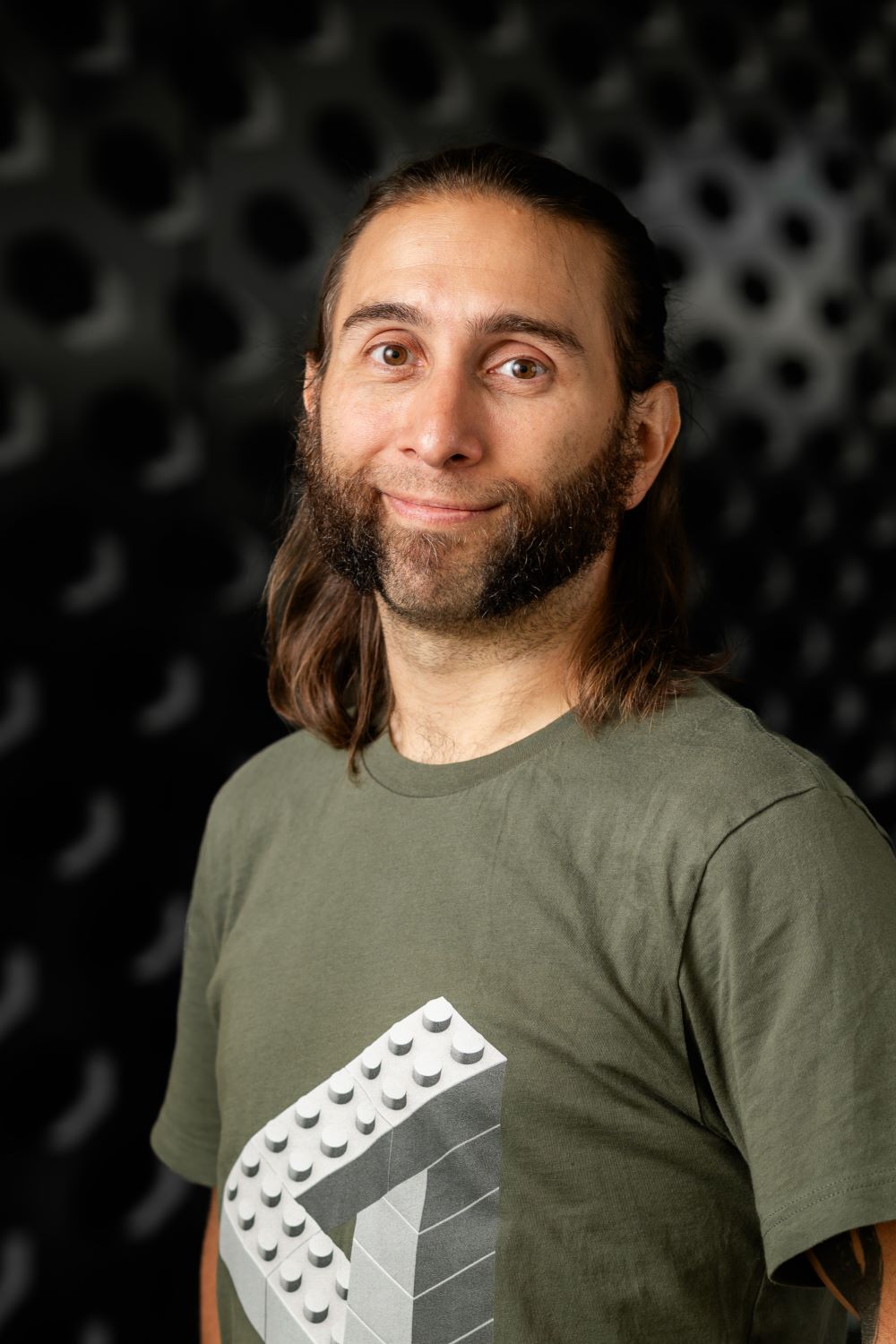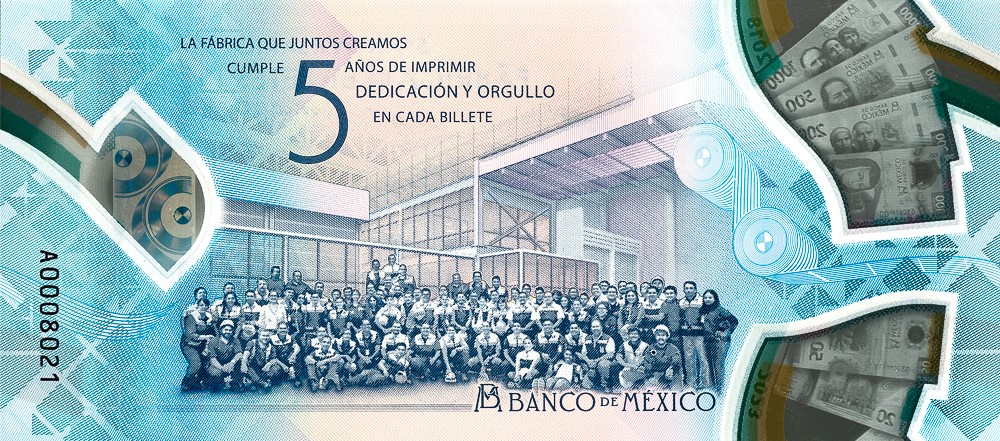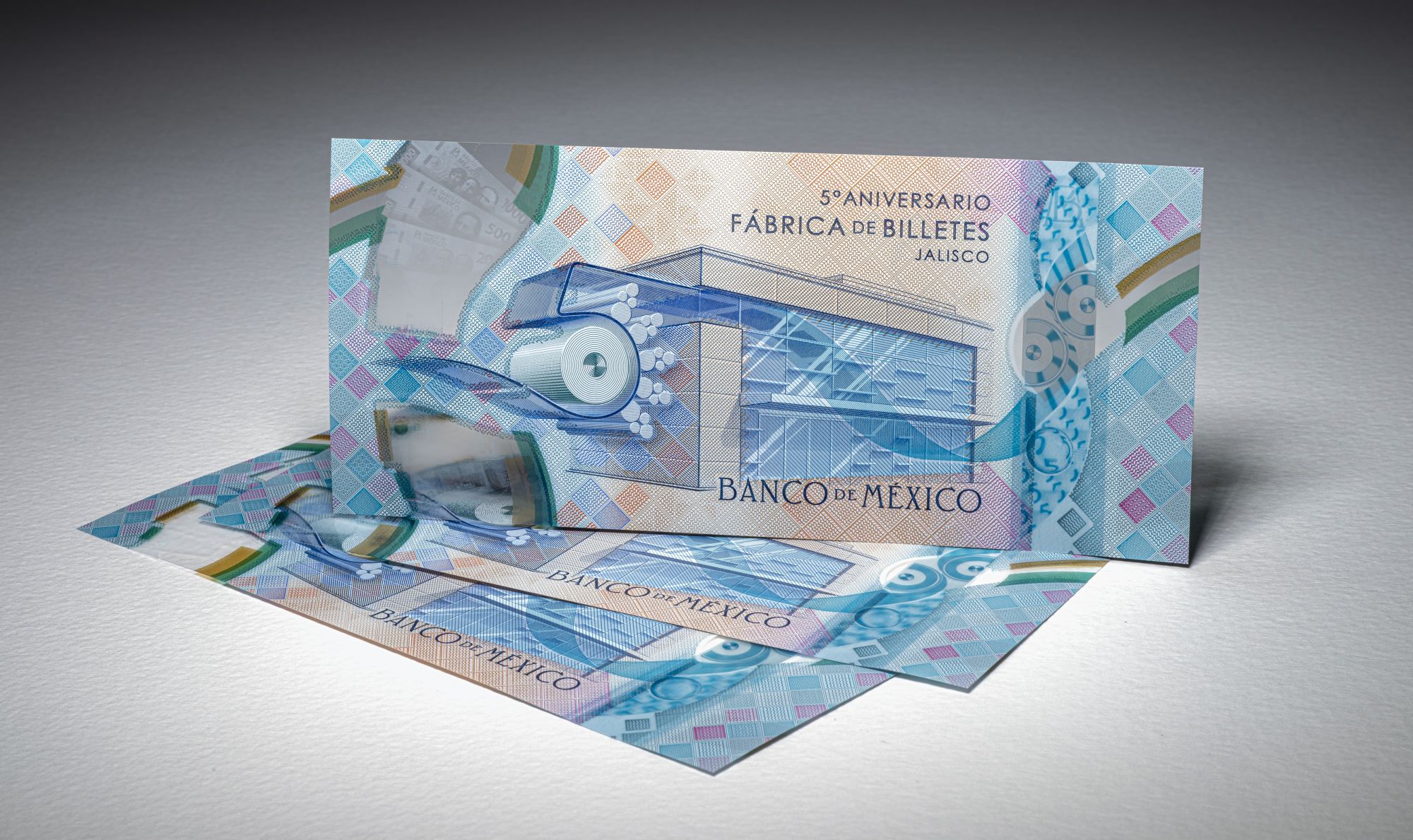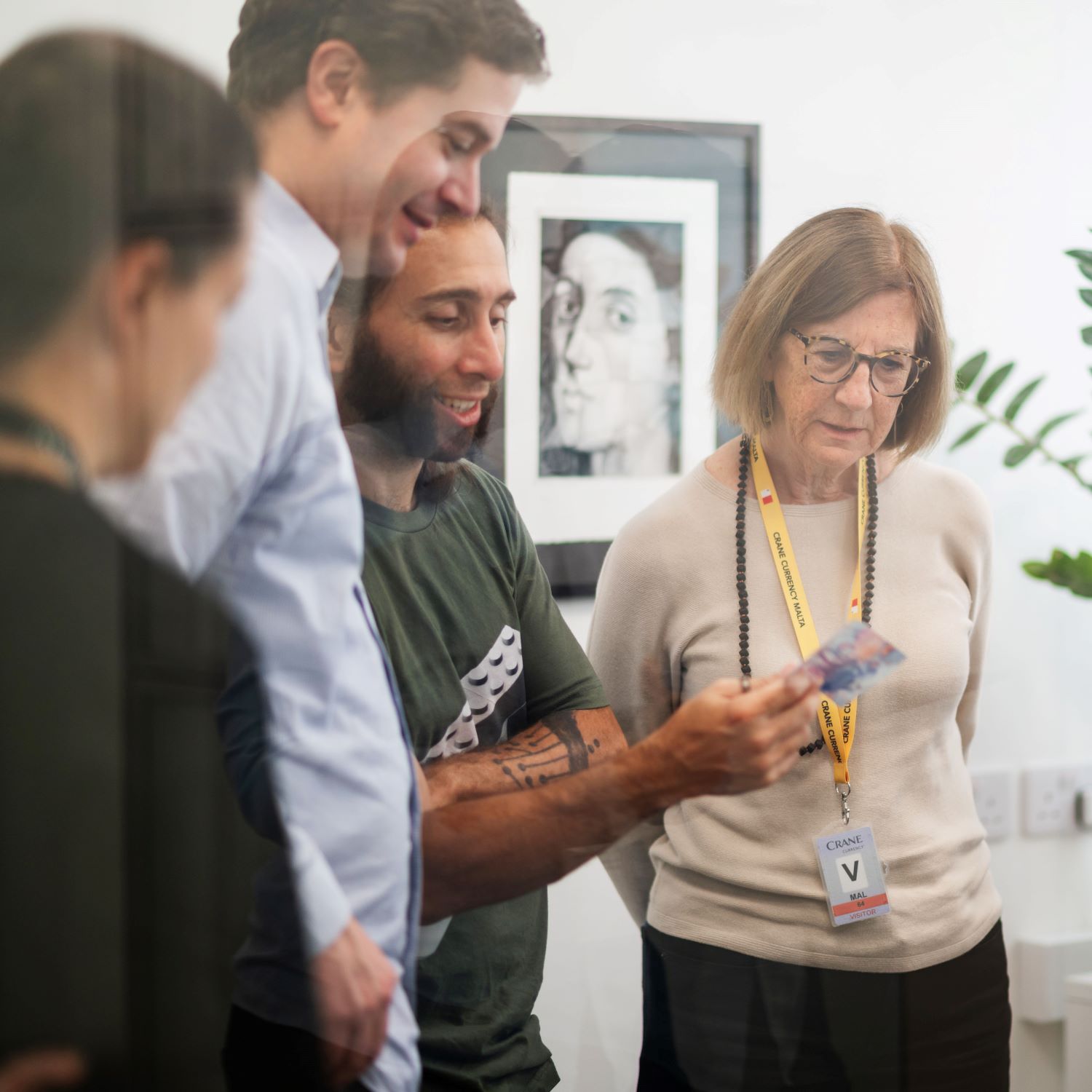25th March 2024
The Jalisco House Note – a Showcase of Innovation and Creativity
Collaborative Banknote Design in Mexico:
A transition from traditional, siloed business operations to a model embracing full-scale collaboration has led to a pivotal shift in many industries. The design and manufacturing of banknotes is no exception. Among central banks, Banco de México is recognized for its thorough and robust work in evaluating and preparing new banknote security features to be implemented against the most serious of counterfeiting threats. When designing the recent Jalisco House Note, the Bank took a non-traditional approach and invited the suppliers’ banknote design experts to an onsite workshop. The result is a tribute not only to the workers at the modern Jalisco printing works, but also to creativity, collaboration, and the value of partner ecosystems.
 Jason van Gumster is an acknowledged micro-optic designer at Crane Currency and a long-time digital animation evangelist and author. When invited to a meeting by the Banco de México, he wasn’t expecting that a dynamic and creative design workshop would unfold.
Jason van Gumster is an acknowledged micro-optic designer at Crane Currency and a long-time digital animation evangelist and author. When invited to a meeting by the Banco de México, he wasn’t expecting that a dynamic and creative design workshop would unfold.
“I went in thinking I was going to make a presentation on MOTION SURFACE® and instead I wound up sharing my passion for collaboration and creative design with other very talented and motivated designers over the course of several days,” says Jason van Gumster.
A Micro-Optic Design Challenge
Before meeting in Mexico, everyone was on a very tight timeline; important anniversaries wait for no one. Crane’s designers received a few concepts from the Bank and were challenged to create a micro-optic design that worked with different designs.
The meeting in Mexico started off in a conventional way in a traditional boardroom. But very soon, Linda Rodriguez, the Process Development and Reengineering Manager, asked everyone to shift from the original plan. Two teams formed on opposite sides of the room, doubling the creative output but with each team focusing on a single concept. Jason along with designers Mario Hernández from Banco de México and Carlos Alemar Diaz from CCL Secure positioned themselves in the middle of the room coaching both teams on the key security features, helping to explore different routes of feature customization, and guiding on the critical tolerances as integration of the features into the two design concepts evolved.
“Banco de México is very structured in evaluating banknote design and security technology. I am not surprised that they receive a lot of interest from other central banks. Creating the workshop in Mexico was a smart move – a lot of our own design knowledge at Crane comes from educating central bank designers about micro-optics. They ask us ‘Can we do this or that?’ and we respond and create totally new iterations,” says Jason van Gumster.
Creative people speaking ‘design’
The Bank’s designers quickly understood how the micro-optics technology worked – and then put forth their own customization possibilities. They began generating conceptual mockups of the desired security feature on the banknote. Jason created animations to show how the feature would look almost in real time, involving Crane’s specialized micro-optic designers in Alpharetta, Georgia, to then create animated mock-ups of the actual concepts.
“MOTION SURFACE is a very customizable security feature, and you can do a lot of cool things with its design integration. Movement can drive attention to the feature, and not all in-house banknote designers understand how that will affect their overall banknote designs. Since we work with very creative people that speak ‘design’, I can sit down and draw something – and instantly show where we are going with their idea”, says Jason van Gumster.
A Tribute to the Workers
The final design of the house note took several iterations but coalesced in a very short time. It celebrates the 5th Anniversary of the inauguration of the banknote printing works in Jalisco on November 7, 2018. The factory has one production line and an installed capacity of 700 million notes per year, a volume that equates to about a third of the banknotes Mexico produces yearly.
The Jalisco House Note was the Bank’s first to be designed and printed on polymer substrate. It integrates novel security features with graphic elements and salutes the team who put the Jalisco printing works into operation.

The reverse side of the note shows the workers who built the printing works.
Increased Importance of House Notes for Security Evaluation
Producing a house note is an important tool for a central bank’s systematic evaluation and testing of new materials and design integration of security features. It can also clear the way for use in production and circulation should the need arise.
When developing the newest Mexican banknote series, Banco de México down-selected security features through a methodical six step process which dwindled one hundred security features to only twelve possible candidates.
Following the same process, in selecting novel security features to be included in Jalisco House Note, MOTION SURFACE had the desired security characteristics and importantly can be applied to both cotton paper and plastic polymer substrate. Banco de México also selected VIVID™ Color from CCL Secure as a new and prominent Level 2 feature to be included.
The polymer substrate was manufactured at CCL Secure’s facilities in Querétaro, Mexico where the VIVID Color feature was incorporated during production. The MOTION SURFACE strip was applied at Crane Currency’s facility in Ħal Far, Malta approximately four months after the design workshop that guided its customization and ultimate integration into the design printed in Jalisco.

The power of collaborative customization: Jaliso House Note from Banco de México.
The Jalisco House Note allowed the Bank’s design and operations teams to leverage their creativity and experience towards a complete evaluation, from feature concepts to production. A process that takes on special significance when dealing with advanced Level 1 features used by the public.
“Banco de México is a long-time user of Crane micro-optics and an advanced banknote printer. Its evaluation is in-depth, encompassing public perception, security analysis and printability. It’s a privilege to work with their teams,” says Rebecca Herr, MOTION SURFACE Product Manager at Crane Currency.
Rebecca was also highly involved in the creation of the Jalisco House Note with her product and manufacturing expertise. Before moving forward with the design workshop and creating new designs of MOTION SURFACE, her team had to answer numerous questions on the feature’s tolerances, application parameters, durability, etc.
MOTION SURFACE on Polymer
MOTION SURFACE exhibits strong 3D visual cues and movement effects, and it is necessary to find a balance between movement and contrast, between color and its multi-dimensional appearance.
On the Jalisco House Note, the MOTION SURFACE feature is integrated with the rest of the note’s graphic elements through its design effects. It is also visible on the back of the note through a transparent window, thereby connecting it to both sides of the note.
Within the stripe itself is a tour de force of distinctive visual effects, some more prominent than others. All of these are linked to the note’s theme including a moving web, rotating press rollers, an array of animated numeral fives which appear to exist several millimeters below the note’s surface expect for those that lie beneath the Topo effect which elevates them to the height of its magnifying power; the keen-eyed will notice the logo of Banco de México appears and disappears as the note is tilted.
The Power of Collaborative Customization
Banco de México’s transformative approach to establishing an ecosystem of collaborating partners is not merely about enhancing efficiency or streamlining processes – it’s a rethinking of how companies innovate, design, and deliver. The future of business innovation lies not in the isolation of efforts but in the power of collective expertise.
For Crane Currency, it does not stop here. Collaborative customization and real-time design will play an even more important role in the years to come, bringing increased flexibility, design opportunities and greater value to central banks.
 “Our Micro-Optics Design (MOD) software is continuously being developed and it’s breathtaking. For me as a designer, its real value lies in being able to have more personal conversations and interactions with the customers. Not every sketch you create will be the best, but these form a process of iteration that creates optimal results. Crane’s software makes this feedback loop yield faster, better results. And this channels directly into the tooling that is used to produce the features in full scale,” says Jason van Gumster.
“Our Micro-Optics Design (MOD) software is continuously being developed and it’s breathtaking. For me as a designer, its real value lies in being able to have more personal conversations and interactions with the customers. Not every sketch you create will be the best, but these form a process of iteration that creates optimal results. Crane’s software makes this feedback loop yield faster, better results. And this channels directly into the tooling that is used to produce the features in full scale,” says Jason van Gumster.
“Ultimately for central banks, this leaves behind older forms of ‘mix-and-match’, piecemeal security design and opens up new possibilities for security features that lend themselves to collaborative customization,” he concludes.